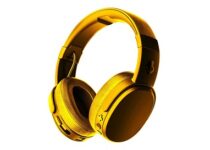Open-back vs Closed-back Headphones
Are you looking for the perfect headphones for your music experience? Open-back or closed-back headphones? That’s the question! While both offer high-quality sound, they have distinct differences that can make or break your listening experience.
In this article, we’ll explore the pros and cons of each type of headphone and help you determine which one is best for you.
The main difference between open-back vs closed- backed headphones is Open-back headphones are known for their natural sound quality and ability to produce a wide sound stage.
On the other hand, closed-back headphones are preferred for their noise isolation and ability to produce a powerful bass response. In this article, we’ll delve into these differences and help you make an informed decision on which one to choose.
So, which one is the winner in the open-back vs closed-back headphones debate? Let’s find out!
Whether you’re a music enthusiast or a professional sound engineer, this article will provide you with everything you need to know to make the best choice for your music needs. Let’s dive in!
What are open-back headphones?
Open-back headphones are designed with perforations on the ear cups to allow air to flow in and out of the headphones.

This design creates a more natural and spacious sound stage, making them ideal for critical listening and audiophile use.
Due to the open design, sound leaks out of the headphones, making them unsuitable for use in noisy environments. They are also not suitable for use in public places, as the sound leakage can disturb others around you.
What are closed-back headphones?
Closed-back headphones are designed with a sealed enclosure on the ear cups to prevent sound from leaking in or out. This design provides excellent noise isolation, making them ideal for use in noisy environments or public places.
However, the closed design can create a more confined sound stage, and the sound can feel more trapped in your head. This design is often preferred for studio use, where isolation is essential for accurate monitoring.

Now we will look at some of the factors and will understand which headphones are great for what purpose.
1. Sound quality: Open-back vs. closed-back headphones
For differentiating in sound quality we will look at some factors so that you have a better understanding while choosing open-back vs closed-back headphones.
-
Soundstage
The soundstage of open-back headphones is more expansive and natural, providing a more immersive listening experience.
On the other hand, closed-back headphones tend to have a more confined soundstage, making them better suited for critical monitoring.
-
Isolation
Closed-back headphones provide superior noise isolation, making them ideal for use in noisy environments or public places. Open-back headphones leak sound, making them unsuitable for these situations.
-
Bass response
Open-back headphones tend to have a more natural and airy bass response, while closed-back headphones can provide a tighter and more controlled bass response.
-
Midrange and treble response
Open-back headphones can provide a more detailed and natural midrange and treble response, while closed-back headphones can sometimes have a more artificial or exaggerated response in this range.
-
Imaging
Open-back headphones can provide better imaging and a more accurate soundstage, while closed-back headphones can sometimes struggle with imaging due to the confined soundstage.
2. Comfort: Open-back vs. closed-back headphones
Another important factor to consider when choosing between open-back and closed-back headphones is comfort. Comfort is especially important if you plan on wearing your headphones for extended periods of time.
Open-back headphones tend to be more comfortable for long listening sessions because they are less likely to cause fatigue or discomfort.
This is because the open design allows for better airflow and reduces the build-up of heat and pressure around the ears.
Additionally, the lighter weight of open-back headphones makes them less likely to cause discomfort or strain on the head and neck.
Closed-back headphones, on the other hand, can sometimes be less comfortable for long listening sessions. The closed design can cause a build-up of heat and pressure around the ears, leading to discomfort or fatigue.
Additionally, closed-back headphones are often heavier than their open-back counterparts, which can put added strain on the head and neck over time.
Some closed-back headphones may be more comfortable than some open-back headphones, depending on the design and construction.
Ultimately, it’s important to choose headphones that feel comfortable and fit well, regardless of whether they are open-back or closed-back.
3. Portability: Open-back vs. closed-back headphones
Portability is another important factor to consider when looking at open-back vs closed-back headphones.
If you plan on using your headphones on-the-go, while travelling or commuting, then portability becomes a crucial consideration.
In general, closed-back headphones tend to be more portable than open-back headphones. The closed design provides better noise isolation, which can be important in noisy environments, such as planes, trains, or buses.
Additionally, closed-back headphones are often more compact and easier to fold or store, making them a convenient choice for travel.
Open-back headphones, on the other hand, are less portable due to their open design. They are less effective at blocking out external noise, which can be a problem in noisy environments.
Additionally, the open-back design can make them bulkier and harder to store, which can be inconvenient for travel.
That being said, there are some open-back headphones that are designed with portability in mind, and some closed-back headphones that may not be very portable.
When considering portability, it’s important to look at the size and weight of the headphones, as well as any carrying cases or accessories that may be included.
Ultimately, the choice between open-back and closed-back headphones for portability depends on your specific needs and intended use.
4. Durability: Open-back vs. closed-back headphones
Durability is an important factor to consider when purchasing headphones, as they can be quite an investment. In general, closed-back headphones tend to be more durable than open-back headphones.
This is because the closed-back design provides better protection for the headphone drivers, which can be more easily damaged in open-back headphones.
Additionally, closed-back headphones tend to be built with sturdier materials, such as metal or hard plastic, which can withstand more wear and tear over time.
However, this is not to say that all closed-back headphones are more durable than open-back headphones. There are exceptions to every rule, and some open-back headphones may be built with durable materials and components.
If you plan on using your headphones primarily in a home listening environment, then open-back headphones may be a viable option.
However, if you plan on using them in more rugged or portable situations, such as during travel or at the gym, then closed-back headphones may be a better choice due to their added durability.
Note: check out our guide on how to use headphones with an android device.
5. Price: Open-back vs. closed-back headphones
Generally speaking, closed-back headphones tend to be more affordable than open-back headphones, as the latter require more intricate designs and high-quality materials to achieve the desired sound quality.
However, there are exceptions to this rule, and some high-end closed-back headphones can be just as expensive as their open-back counterparts.
Although, here if you are confused abut on ear and off ear headphones.
Is an open back or closed-back headphones better?
Both open-back and closed-back headphones have their strengths and weaknesses, so it’s difficult to say which one is objectively better.

Open-back headphones provide a more natural and spacious soundstage, which can create a more immersive listening experience. However, they tend to leak sound, which makes them unsuitable for use in noisy environments or public places.
On the other hand, closed-back headphones provide superior noise isolation and a more controlled sound, making them ideal for use in noisy environments or critical monitoring.
However, the sealed design can sometimes make them less comfortable for long listening sessions.
Ultimately, the choice between open-back and closed-back headphones depends on your personal preferences and intended use.
If you still can’t choose which one you should buy then now we will look which one you should buy.
Who should buy open-back headphones?
Open-back headphones are best suited for audiophiles and critical listeners who value a natural and spacious soundstage above all else. They are also ideal for home listening environments where sound leakage is not an issue.
If you prefer a more immersive listening experience and don’t mind sacrificing noise isolation, open-back headphones may be the right choice.
Who should buy closed-back headphones?
Closed-back headphones are ideal for use in noisy environments or public places where noise isolation is essential. They are also better suited for critical monitoring and studio use, where accuracy is of the utmost importance.
If you prioritize noise isolation and prefer a tighter, more controlled sound, then closed-back headphones may be the right choice for you.

If you have made your decision then you can check out our article on best closed-back headphones.
Frequently Asked Questions
Can open-back headphones be used in public places?
Open-back headphones are not suitable for use in public places as they leak sound and can disturb others around you.
Are closed-back headphones more comfortable than open-back headphones?
Closed-back headphones can sometimes feel more uncomfortable due to the sealed design, while open-back headphones tend to be more comfortable for long listening sessions.
Do open-back headphones have better sound quality than closed-back headphones?
Open-back headphones provide a more natural and spacious soundstage, while closed-back headphones provide superior noise isolation. The sound quality ultimately comes down to personal preference and intended use.
Are open-back headphones more expensive than closed-back headphones?
Generally speaking, open-back headphones tend to be more expensive than closed-back headphones due to their intricate designs and higher-quality materials.
Can closed-back headphones be used for home listening?
Yes, closed-back headphones can be used for home listening, but they are better suited for use in noisy environments or public places where noise isolation is essential.
Conclusion
When it comes to choosing between open-back vs closed-back headphones, there is no one-size-fits-all solution. It ultimately comes down to personal preference and intended use.
Open-back headphones provide a more natural and spacious soundstage but leak sound and are not suitable for use in noisy environments or public places.
Closed-back headphones provide superior noise isolation and are better suited for critical monitoring and use in noisy environments.
Consider your listening environment, intended use, and personal preferences before making your decision.
And remember, there are exceptions to every rule, so don’t be afraid to try both types of headphones before making your final decision.



